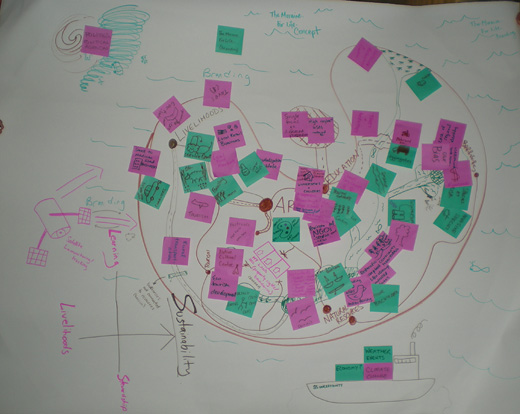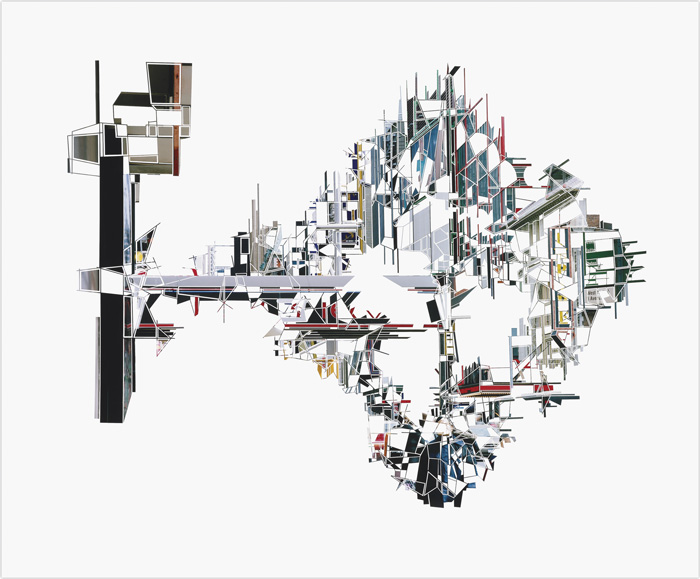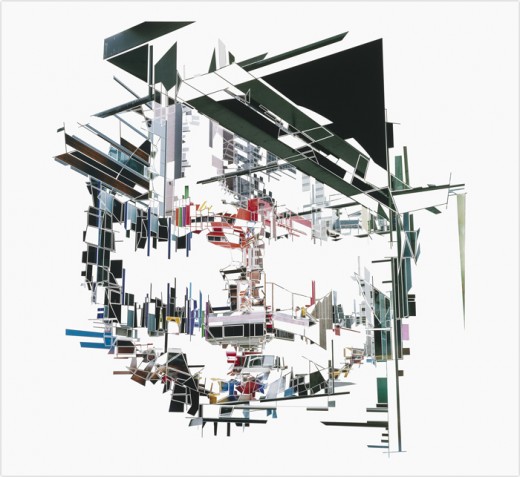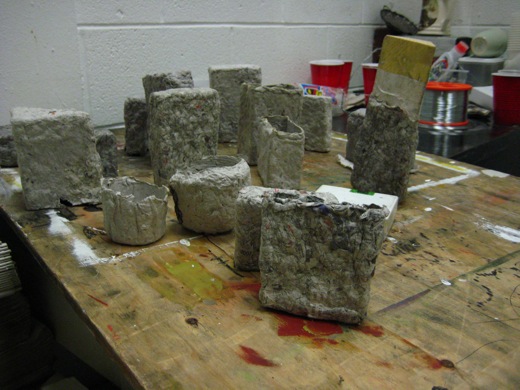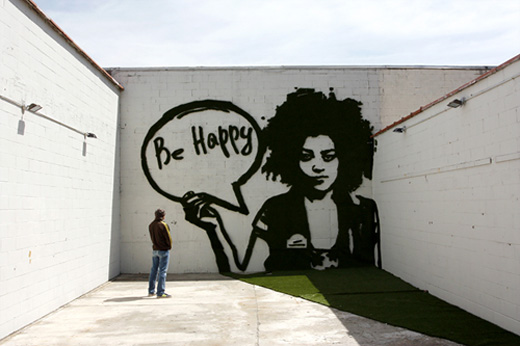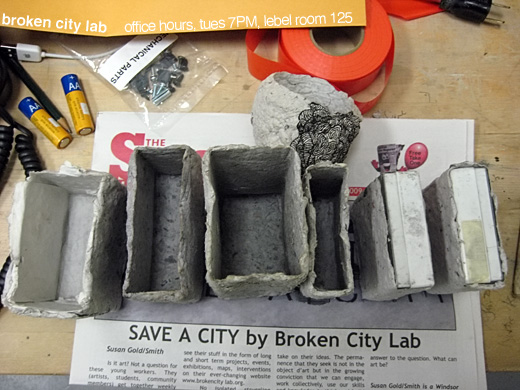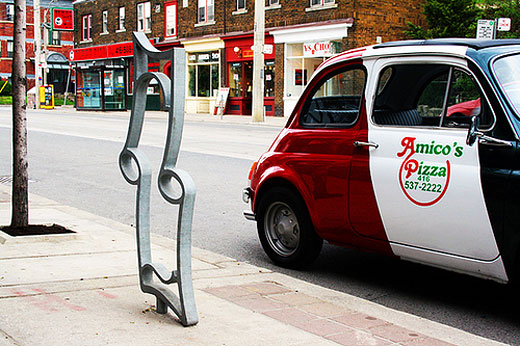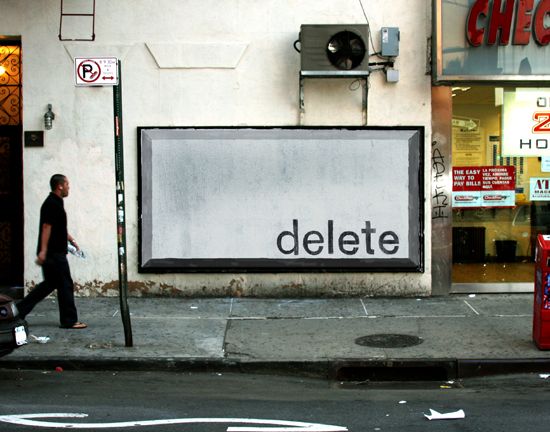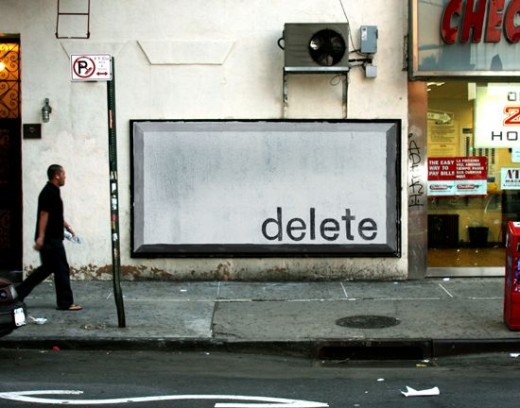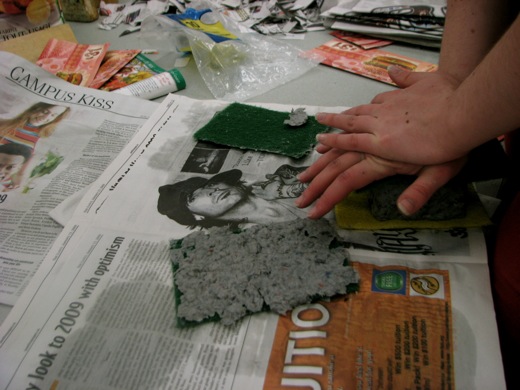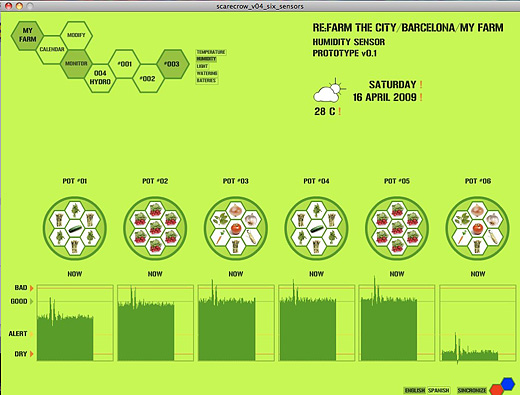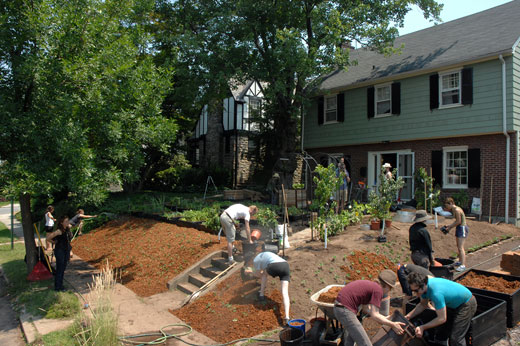
Frtiz Haeg is a difficult person to write about. That is, he has had some considerable press coverage over the last few years, much of which from the major TV networks casts him in a kind of strange “green” light, and whether he’s described as an artist, architect, gardener, or designer, Fritz Haeg (in practice) seems to dodge all of these titles. He’s not nearly as eloquent as Natalie Jerimijenko (though her Ooz Inc. project and his Animal Estates project are fairly similar), yet he does craft some very exciting language around being a catalyst for community activity, and so while I’ve seen his work in a number of places over the last year or so, I thought it was finally time to post it.
The project that seemed most appropriate to note is his Edible Estates, an ongoing collection of front-yard or community gardens across the US, where he basically directs the tearing up of suburban grass farms to replace them with vegetables and native plants. The image above is from Maplewood, New Jersey.
I’ve seen a few front yards in Windsor and Essex County without grass, but I’d be interested to know where they are specifically, or if there are others hidden throughout the area. Maybe instead of one community garden in Sandwich, we should be pushing for the transformation of all the front yards on a block to be one, big connected garden? Yes, we should.
